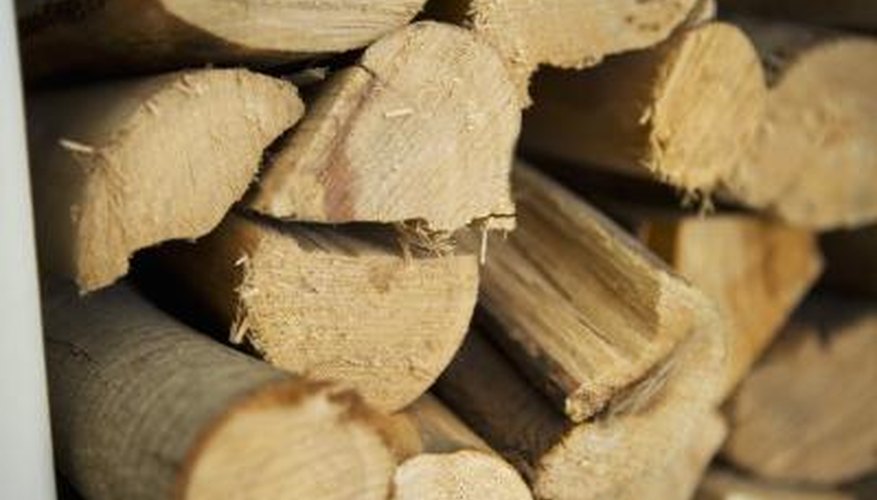Punk or punky wood is a soft, rotted area, usually in the centre of a tree or log. This condition is usually caused by fungal infection, and may not be easy to identify from the outside. Punky wood can interfere with woodworking projects such as turning. However, punky wood is not always a problem. It works well as a fire starting material, especially when camping or in other situations where paper and other tinder are not readily available.
Fire Starting
Fires start best when the initial spark or flame can catch in a soft, dry material containing many air spaces. Punky wood that has rotted until it feels spongy, then dried, works well to get a fire going. The wood can be crumbled from a rotten branch for immediate use, but, according to Green Earth Survival School, it works best when it has been cooked over a fire in an enclosed space. The resulting lightweight charcoal ignites easily and takes up less space than other forms of tinder.
- Fires start best when the initial spark or flame can catch in a soft, dry material containing many air spaces.
- The wood can be crumbled from a rotten branch for immediate use, but, according to Green Earth Survival School, it works best when it has been cooked over a fire in an enclosed space.
Woodworking
Punky wood lacks the strength and structural stability of the surrounding material, but may not show up in woodworking until the project is already well under way. This is a particularly common problem in wood turning, where the working process exposes large portions of concealed material. Some punky wood has rotted incompletely, and can be left in place, as long as it does not need to provide structural support. Other punky wood is extremely soft and will ruin the piece.
- Punky wood lacks the strength and structural stability of the surrounding material, but may not show up in woodworking until the project is already well under way.
- Some punky wood has rotted incompletely, and can be left in place, as long as it does not need to provide structural support.
Stabilising Punky Wood
Porous, soft areas of lumber can sometimes be stabilised using cyanoacrylate glue, epoxy sealer or commercial wood hardeners. These substances form a bond with the rotted wood, creating a composite material that retains the look of wood, but is much harder. Apply stabilisers only to dry, slightly warm pieces and in a well-ventilated area. Wood stabilisers tend to leave the damaged area with a slightly glossy finish, and must be sanded to match the rest of the wood. They work best when the entire piece will be finished using a gloss product, such as lacquer or polyurethane. Even after stabilisation, punky wood remains weaker than the surrounding material and will not work as a structural element.
- Porous, soft areas of lumber can sometimes be stabilised using cyanoacrylate glue, epoxy sealer or commercial wood hardeners.
- Wood stabilisers tend to leave the damaged area with a slightly glossy finish, and must be sanded to match the rest of the wood.
Considerations
The term "punky wood" can refer not only to a soft, rotted area of a tree, but also to wood that has become too dry through overseasoning. While dry wood burns best, overdry wood actually burns inefficiently, releasing most of its burnable material as smoke. This reduces the heat value of the wood and increases the risk of creosote build-up. Wood must have around 20 to 25 per cent moisture to burn well in an airtight modern stove, according to The Chimney Sweep and the US Department of Energy .
- The term "punky wood" can refer not only to a soft, rotted area of a tree, but also to wood that has become too dry through overseasoning.
